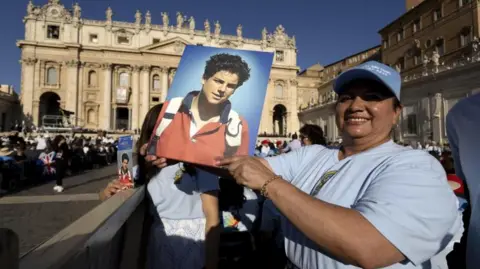In a historic moment for the Roman Catholic Church, the conclave to elect the new pope is taking place at the Vatican. Cardinal electors, who rank just below the pope, will gather to select a successor to Pope Francis through a confidential voting process that requires a two-thirds majority to confirm the new pontiff. The conversations held within these locked doors remain a mystery to the outside world, but the procedures and objects utilized during the conclave are steeped in rich tradition and significance.
The setting for the voting is the illustrious Sistine Chapel, where the cardinals will sit at simple wooden tables arranged in rows. At one end, a dedicated team manages the voting process, abiding by the guidelines set forth in Universi Dominici Gregis (U.D.G.), a critical document governing papal transitions.
Integral to the voting are specific instruments meticulously designed for the procedure. An urn is employed to collect the ballots, which are rectangular slips of paper inscribed with the phrase “Eligo in Summum Pontificem,” translating to “I elect as Supreme Pontiff.” Each cardinal uses the ballots to write in the name of their preferred candidate. After the votes are cast, the ballots are placed in the urn for counting.
To ensure transparency and accuracy during the counting, wooden balls marked with the number of cardinals participating in the conclave are used. As each ballot is counted, an attendant will remove one ball to confirm that the number of votes matches the number of cardinals. If discrepancies arise, the ballots are incinerated without being read, necessitating a repeat of the voting process as per the U.D.G.
As the conclave progresses, the anticipation surrounding the next pope continues to loom, with the tradition of electing a new leader remaining an emblematic component of the Roman Catholic faith.
The setting for the voting is the illustrious Sistine Chapel, where the cardinals will sit at simple wooden tables arranged in rows. At one end, a dedicated team manages the voting process, abiding by the guidelines set forth in Universi Dominici Gregis (U.D.G.), a critical document governing papal transitions.
Integral to the voting are specific instruments meticulously designed for the procedure. An urn is employed to collect the ballots, which are rectangular slips of paper inscribed with the phrase “Eligo in Summum Pontificem,” translating to “I elect as Supreme Pontiff.” Each cardinal uses the ballots to write in the name of their preferred candidate. After the votes are cast, the ballots are placed in the urn for counting.
To ensure transparency and accuracy during the counting, wooden balls marked with the number of cardinals participating in the conclave are used. As each ballot is counted, an attendant will remove one ball to confirm that the number of votes matches the number of cardinals. If discrepancies arise, the ballots are incinerated without being read, necessitating a repeat of the voting process as per the U.D.G.
As the conclave progresses, the anticipation surrounding the next pope continues to loom, with the tradition of electing a new leader remaining an emblematic component of the Roman Catholic faith.




















